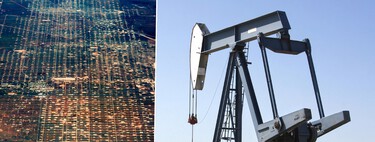Three Danish companies – Topsoe, Skovgaard Energy and Vestas – pooled their expertise in different fields of the renewable industry to produce green ammonia in the most efficient way possible. Ramme factory It is the first one prepared to operate directly with intermittent energy sources.
First step: generating clean energy. The plant receives electricity from a renewable energy park located a few metres away. Before the ammonia plant was built, the park already had six 2 MW Vestas V80 wind turbines.
The project included the installation of 50 MW of bifacial solar panels. The new solar capacity was added to the 12 MW of power already installed in wind turbines. It is the first time that a hybrid wind and solar park is directly connected to an ammonia plant.
Second step: electrolysis of water. Clean energy generated by solar panels and wind turbines is used to power an electrolyzer, a device that applies electricity to water to break down H2O molecules into hydrogen and oxygen.
This process is the same as that which produces green hydrogen, but in this case it is only an intermediate step to obtain ammonia, since hydrogen is not stored as gas or used as fuel.
Third step: synthesis of ammonia. Hydrogen obtained from electrolysis is combined with nitrogen, extracted from the air, in a process known as Haber-Bosch synthesisThis process is carried out in a “synthesis loop” that has been adapted to operate efficiently despite the intermittent nature of renewable energy sources.
One of the plant’s key innovations is its ability to adjust output to real-time fluctuations in solar and wind power. The factory automatically increases or decreases its output in accordance with the availability of renewable energy, ultimately optimizing its efficiency and operating costs.
Transform your home with the energy of the sun. At Comunidad Solar, we install high-efficiency photovoltaic panels so you can enjoy clean electricity and save on your bill. With the best technology on the market and unparalleled service, we ensure your total satisfaction.
Advice offered by the brand
The final result. The Ramme plant will produce 5,000 tonnes of green ammonia annually. Ammonia, an essential chemical in agriculture and many industries, but produced using clean energy sources. Green ammonia can be used as a fertiliser, fuel and hydrogen carrier, all without any carbon emissions associated with its production.
Producing 5,000 tonnes of green ammonia saves 8,200 tonnes of CO2 per year. Ammonia is also easier to transport than hydrogen, so it can be a practical way to store excess energy generated by wind and solar power during periods of high production.
Why is this an important step forward? This is the first plant in the world to demonstrate a direct integration of wind and solar energy in ammonia production. Traditionally, chemical plants require a constant supply of energy, which is not compatible with the intermittent nature of renewable energy.
This plant and its ability to adapt in real time to fluctuations in renewable energy sources serves as a technological demonstrator for more sustainable industrial processes in the future – a further step towards the decarbonisation of sectors that are difficult to electrify, such as steel and cement factories.
Image | Topsoe
At Xataka | Japan has found the holy grail of electrolysis: a cheap metal that can produce 1,000% more hydrogen
















![[Img #74675]](https://thelatestnews.world/wp-content/uploads/2024/12/They-discover-a-new-class-of-X-ray-sources-in-the-300x200.jpg)
Add Comment